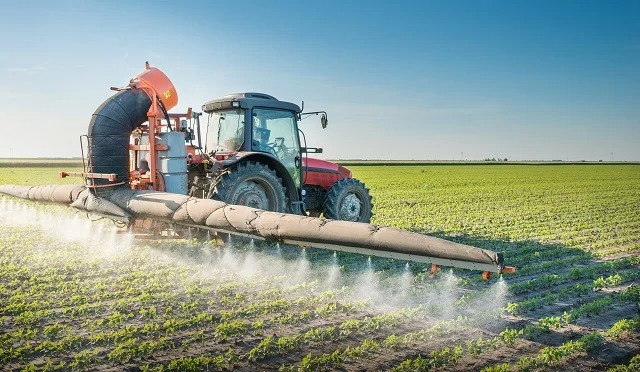
Success or failure, the farmers know, depends on these inputs as they do not have their own resources to acquire them.A village head from Guruve in Mashonaland Central, Mukambi Chimanikire (74), aptly captured the situation when he said the fight at village level was for survival and the donation of seed and fertiliser was enough for them to prevail.At village level, Chimanikire said, they were not interested in who is getting what post in government, as long as they got the necessary inputs for the impending rainy season. He was referring to the standoff between the principals in the inclusive government which resulted from arguments over positions.“Whereas the struggle in the past has been for pieces of land, we now fight for food while those at the top may be fighting for positions,” said Chimanikire. “This is a different year and we wish these people (EU and FAO) would continue giving us maize seed and fertiliser in the coming seasons. We also appeal that the quantities be increased.”The dishing out of inputs to villagers has become a spectacle repeated in almost every district in the country as communal farmers struggle to get inputs. Lack of adequate inputs in recent years has led to poor harvests which in turn have seen the country importing maize to meet the deficit.In the 2009 budget, the then Acting Finance minister Patrick Chinamasa said government would provide communal farmers with two bags of fertiliser and 10 kg of maize seed, something that has not happened.While preparations for the 2009/2010 season appeared to be on course a few months after the government of national unity became operational, the plot seemed lost as time progressed.There has been much abstracting and generalisation by government of the country’s potential to produce while reality shows that farmers are struggling to get enough inputs for a good harvest.Statistics on fertiliser imports, seed uptake and land preparations show that the season, as has become the case since the turn of the century, has been lost and it would take a miracle to save it.Government has largely abdicated its duty to support farmers, waiting for donor agencies to collect and distribute resources.It has been reported that government has managed to raise only US$5,7 million out of US$48 million it had planned to use to fund agricultural production this season and there are no solid plans to make up the deficit.In the first official confirmation that the 2009/2010 farming season will again go to waste, agriculture permanent secretary Ngoni Masoka was recently quoted saying the country had managed to acquire less than half of the amount of fertiliser required by farmers.The latest assessment by FAO shows that the country should produce about 25% of the staple maize crop, about 450 000 tonnes which is a 70% drop on the 1,5 million tonnes produced during the 2008/2009 season. Most of the crop for the 2009/2010 season is likely to come from farmers supported by donor agencies. Reserve Bank governor Gideon Gono has lately been pushing for the immediate disbursement of funds which were raised to support communal farmers this season.Gono has gone further by directing banks to support agriculture through loans, but this will cater for farmers with collateral, which means the communal farmers would be excluded.A chief executive of a commercial bank told The Zimbabwe Independent that wrong signals were being sent with regards to banks’ position on offering loans to farmers.“Not all farmers can access the inputs. There are administrative hurdles and issues to do with security before inputs are released,” the banker said. “Banks look at risk before issuing loans, just like any other business. It is unfortunate that some sections of society are not giving proper explanations to farmers.”Focus has largely been on the commercial farmer, with policymakers trying to ensure that they got loans for the coming season. But this has resulted in the neglect of the communal farmer whose production in the last decade has been hand to mouth.In Guruve, for example, the farming inputs project by the EU and FAO targets communal farmers without draft power but with a minimum of half a hectare of land. They also focus on the disabled, the elderly and those affected by illnesses such cancer and asthma.Farmers outside this category have to source their own inputs or get them from government but this is very difficult and in most cases results in the underutilisation of their pieces of land.In most cases, the donations which farmers have been relying on are only a starting point, for example the 15 kg of seed and a 50 kg bag of fertiliser, would cover at most one hectare which may not be enough to support a family of eight throughout the year.Jairos Chingandura, a 34-year-old farmer from Guruve, has received seed and fertiliser from the EU and FAO in the last three years but wishes this package was increased so that he would be able to increase hectarage.“I have been able to sell the surplus (maize realised from farming supported by EU and FAO) and this has helped me a lot since I am not formally employed and have three children,” said Chingandura. “We have improved on our harvest and we wish the package would be increased to three bags of topdressing fertiliser and 30 kg of seed so that we increase the hectarage.”If one has been enjoying these inputs for three years and anticipates continued support, then it is a sign that it would take long before communal farmers become self-sustaining.Small-scale communal farmers had by 1999 become the mainstay of maize production in the country, contributing up to 70% of grain, as large scale commercial farmers preferred cash crops which they exported earning hard currency. Unlike now the marketing of these crops was not controlled.A decade later, communal farmers now rely on seed and fertiliser handouts from non-governmental organisations.Zimbabwe’s annual national maize requirement is 1,8 million tonnes and the average crop yield is 0,44 tonnes per hectare.This means that farmers have to put around 4,1 million hectares under maize to meet the country’s minimum consumption requirements before realising a surplus.
Leonard Makombe/Paul Nyakazeya











